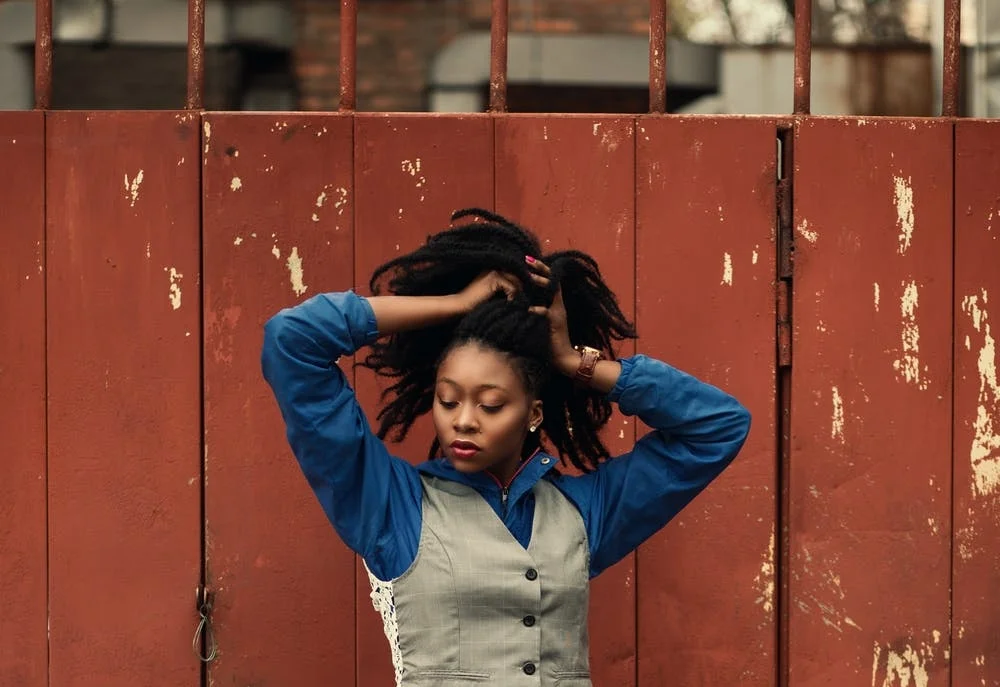“Love Your New Look”: Hair in the Workplace
Growing up, my mother and grandmother would always tell me that my hair was my “crowning glory” and that it deserved to be valued and protected at all costs. In all of its stages throughout the years: relaxed, natural, short, long, brittle, healthy, I have always known that my hair was the one accessory that I was expected to maintain and that was critical to fulfilling that biblical reference of it being my “covering” (I Corinthians 11:15). While I agreed with their encouragement to develop a sense of pride in my hair, the pressure often placed on women of color to fulfill some idealized image of what our hair should look like can be stressful. This is particularly true as we grow-up and move towards navigating academic and professional settings where there are not as many people that look like us or understand and appreciate our crown in all of its uniqueness and versatility.
In a past Culture Corner discussion on The Ebonies in the Ivory Podcast, Dr. Bell and I raised the issue with this hot topic while discussing the story of a young girl in our home state of Louisiana being suspended from school for wearing her hair in braids. The school’s justification was that the hairstyle was “excessive” and “inappropriate” for the school setting. What’s concerning about this is the emotional scar now created within this young woman who will now potentially question everything from her beauty to her worth and value, all because of someone else's lack of cultural competency and our country’s continued systemic biases towards people of color and their physical traits. Similarly, as adult women we continue to see this same scenario play out, often in more passive-aggressive ways, in the world of academia and other professional settings. None of us unfortunately, including myself, are exempt.
Last week, I decided to follow through on my tradition (it only happens twice a year people) of getting my natural hair straightened in honor of both the impending fall season (although we have yet to experience even a slight breeze for a day here in Baton Rouge, but who’s counting?) and the legends that are Beyonce’ and Jay-Z rolling through my hometown to snatch our souls. While my straightened hair didn’t even make it to the end of that week for the concert (read as *humidity is so very disrespectful*), it was the comments at work that were the most interesting. Everything from, “Your hair looks so great like that!” to “Oh wow, I had no idea your hair was that long!” to “I just love you new look. I wish I could change my hair up like that”, had me constantly sneaking back into my office to roll my eyes and check the mirror for this women that people seemed to be so enamored with because of the beauty that, for this particular week, was so undeniable to them.
Of course I’m not saying that receiving compliments is a bad thing, but it the fanfare that occurs when a women of color changes up her hair (typically in a way that is more aligned with Eurocentric traits) that somehow sends everyone swooning. The truth of the matter is that women of color change up their crowns significantly and regularly...because they can. There’s a freedom that comes with being able to use your hair to express who you are and to compliment the beauty that lies both within and that is externally on display. What’s unfortunate is mainstream society’s view of these changes or a new look as being “extreme”, “unprofessional”, or “not suitable for the workplace”.
I have received so many calls and emails from formers students of mine who are preparing for the graduate school or job interview process, who asked what is the “appropriate” way to style their hair in order to have the best chance of being considered. As someone who lives for a unique look and who changes up their hair often, these conversations often sadden me as I don’t think our non-ethnic counterparts even think about this when they call-up their mentors for professional advice and preparation tips and tools. There now exist tons of website that share tips on ways to be “stylish but professional” and understanding HR policies that have “personal appearance guidelines”. But who makes up these policies? Where do we draw the line when my crown is MY crown and reflects the essence of who I am (even if it's just for that day) and how I’m choosing to present myself to the world that day? Two recent articles, Cornell University Study: Label of natural hair being “unprofessional” (Reidy & Kanigiri, 2016) and The Phenomenon of Hair Discrimination in the Workplace (Adele Burney), tackle these issues head on and offer insight into the evolving discussion around hair in the workplace and what we all need to know to ensure both our creative freedom and employee and student rights.
I’m not sure that there is a perfect solution to navigating the intricacies of the comments of others about the ever-changing state and style of WOCs hair. However, my advice to them remains simple: 1) Don’t touch it, 2) Don’t appropriate it, and 3) Keep that same energy when I approach you about my scholarship application, dissertation proposal materials, or tenure. Please and thank you :)
“By the way, love you new look!”
Sound off, Ebonies: Have you ever had negative workplace experiences involving your hair? How did you handle it?



